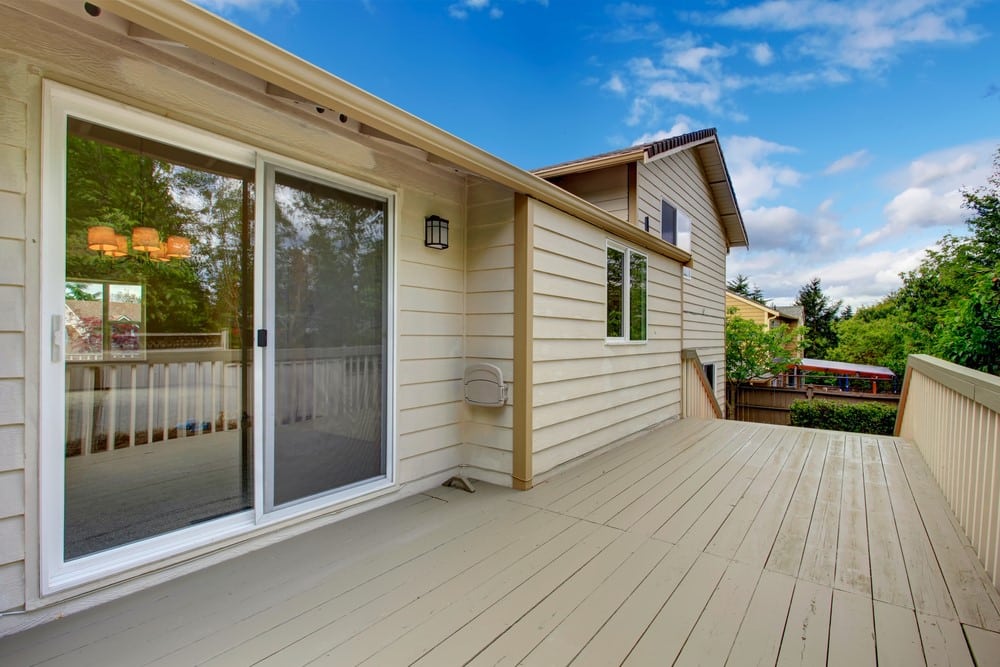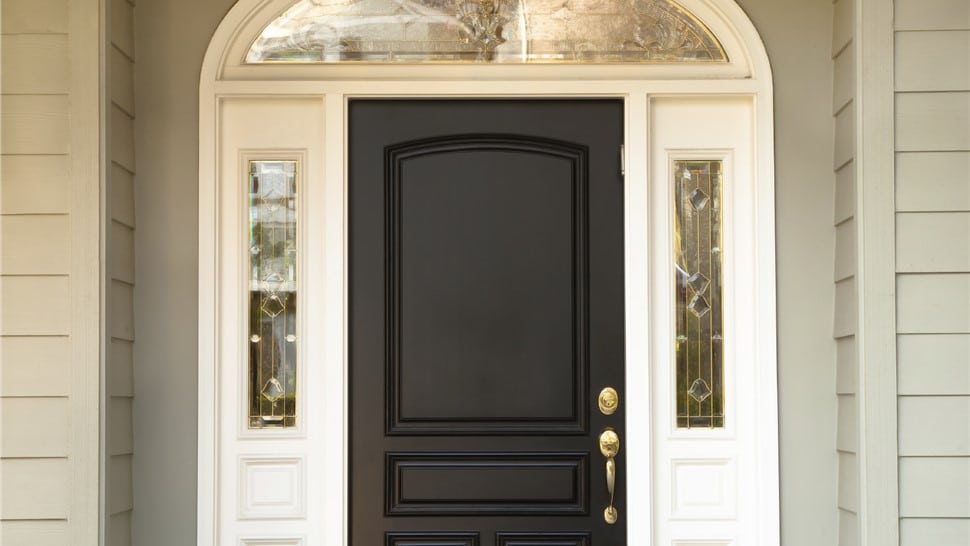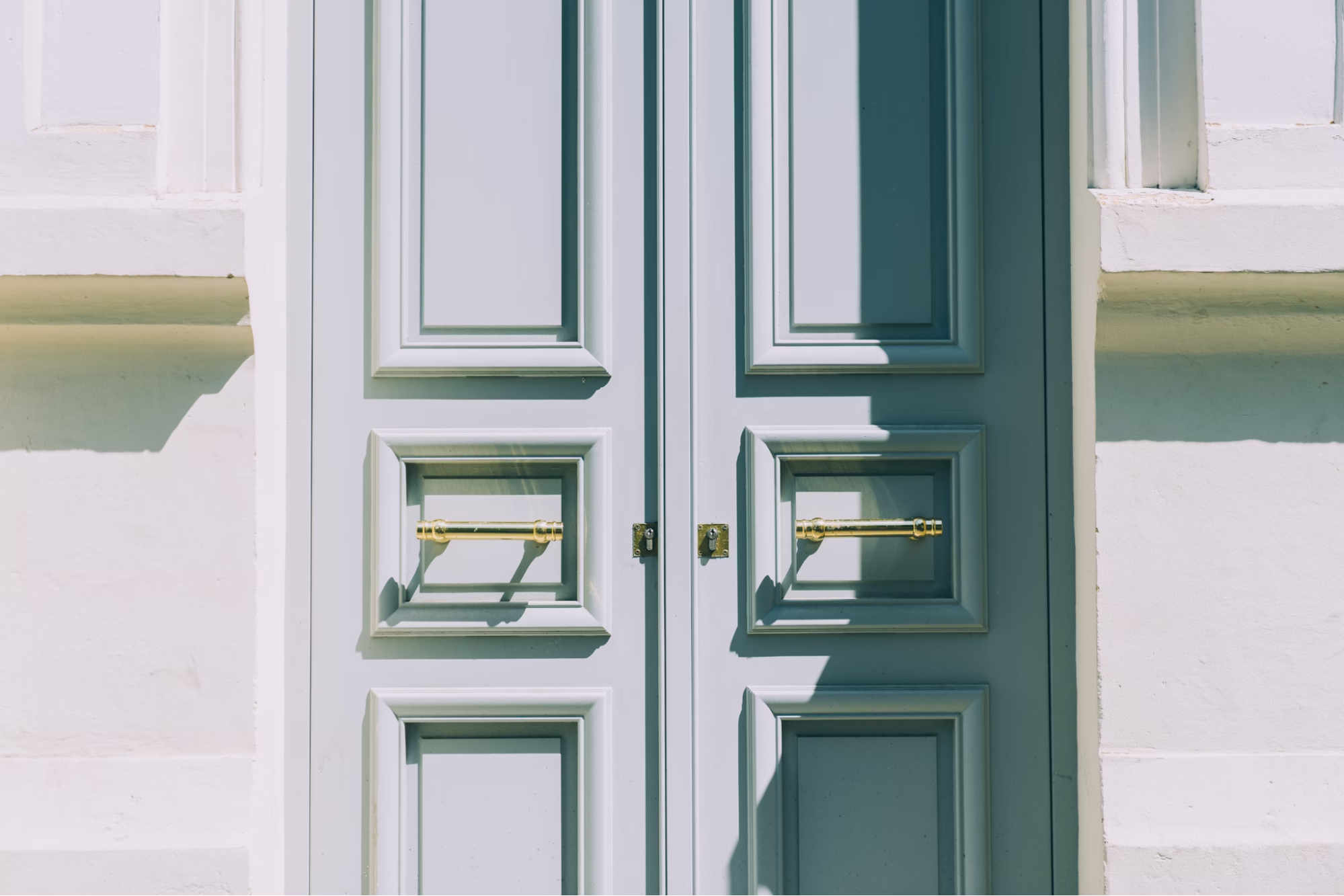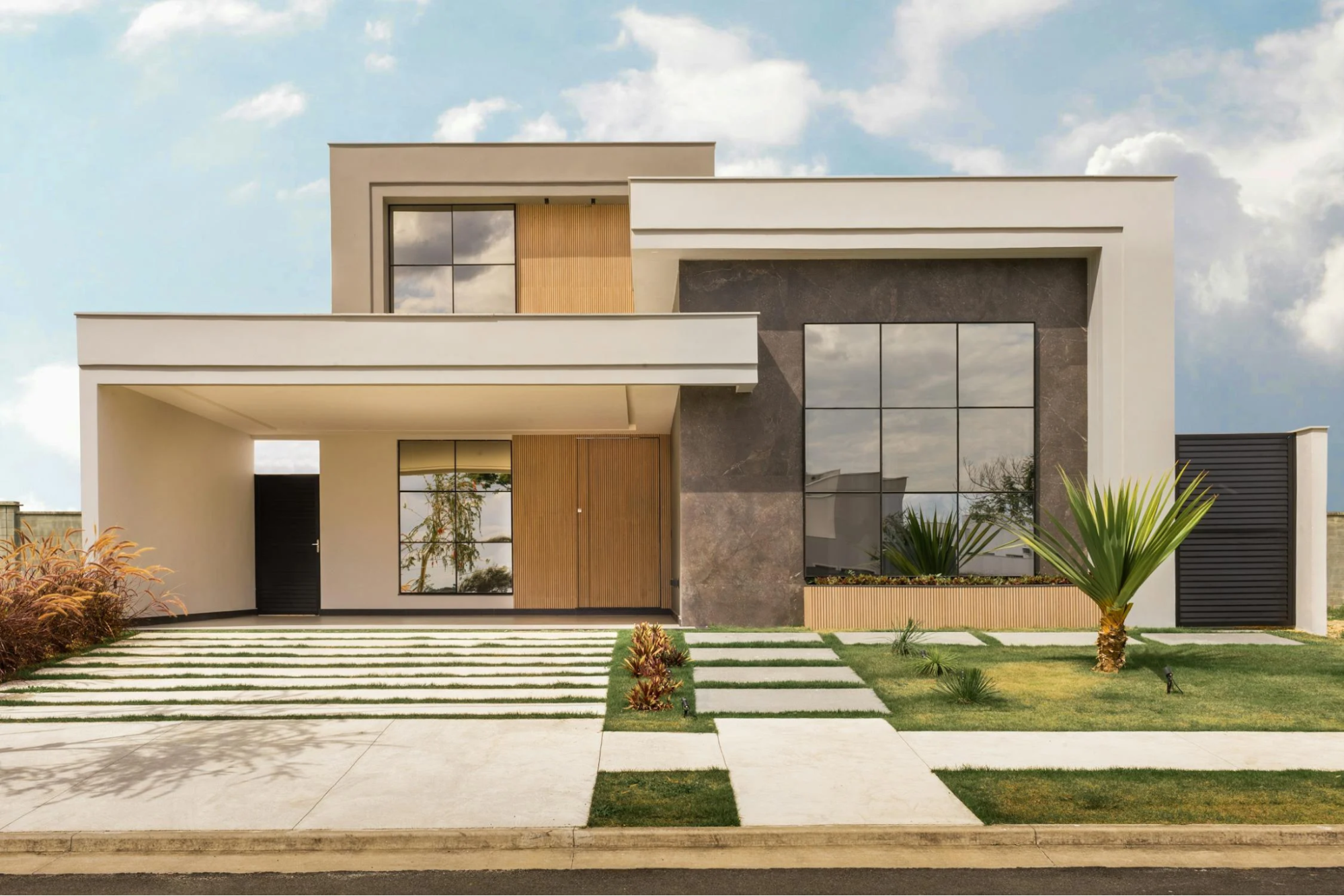Florida’s hot, humid, and hurricane-prone climate can be tough on older front doors. If your entry door is outdated, it may let cooled air escape and compromise security during storms. So, what can you do? Consider front door replacement.
With over 15 years of experience and 100,000+ completed home remodeling projects, FHIA Remodeling is Florida’s leading provider of impact windows, doors, and roofing services.
In this comprehensive guide, our experts will explain how to know when it’s time to consider front door replacement. You’ll also uncover the benefits you can gain from a replacement.
Signs That Indicate It’s Time to Replace Your Front Door
Front door replacement isn’t something most people do spontaneously. Usually, there’s a good reason, like compromised security, aesthetic concerns, or functional problems. Here are the main signs that will help you identify when replacements are needed.
Difficulty in Opening and Closing the Door
Florida’s humidity and heat can cause older door materials, especially wood, to swell over time. One of the main signals that your front entry is misaligned or warped is if you need to push, tug, or pull with more force than usual.
Also, if the latch doesn’t align correctly with the strike plate, you might have a problem. This can reduce front door security by preventing the lock from fully engaging.
Visible Damage
Damage such as cracks, peeled paint, dents, and soft spots caused by rot can indicate a structural weakening in your front door. Even small cracks can let water seep in, which may lead to further damage, mold, or warping, especially in the rainy season.
Some older front doors may show rust on hardware or hinges. Rust can compromise the integrity of the hardware, making forced entry easier. If you notice visible damage, it’s time to finally replace your front door!
Drafts or Leaks Indicating Poor Insulation
Many households in Florida rely on air conditioning year-round to maintain comfortable indoor temperatures and air quality. However, poor door insulation can force your HVAC system to work overtime.
This can result in higher energy bills and a less pleasant home environment. Basic tricks, like a rolled towel, might combat small drafts near the threshold, but these are only temporary fixes. Upgrading to energy-efficient doors with more robust insulation will help keep the cool air inside and reduce monthly utility costs.
Moisture Between Glass Panes or Signs of Rot
Many front doors feature decorative glass inserts. With time, seals around these panes can degrade and allow fog or moisture to appear between the layers of glass. As condensation builds up, it can lead to mildew or mold growth, which can spread into the frame and cause further damage.
If wood is not regularly painted or sealed, it can be susceptible to decay and rot. Softened areas could point to deeper rot in the internal core, which can weaken the doors and make them less secure.
Outdated Design
Choose an aesthetic and functional front door design to boost your home’s curb appeal, especially if you live in a neighborhood with similarly valued properties. If your front entry style clashes with your home’s overall exterior, it might send the wrong message and lower the perceived value of your property.
Outdated doors might come with inefficient single-pane glass or older, less secure hardware. Level up your front entry design and enjoy better insulation and enhanced security.

Benefits of Replacing Your Front Door
Why should you replace your front door? Replacing your front door goes beyond just fixing immediate problems like peeling paint. Here are the details.
Enhanced Security
Consider a new front door with secure locks and reinforced frames. Impact-rated glass can further boost the overall safety of your home.
Modern door materials such as steel and fiberglass can stand up against forced entry, keeping your entire family safe and secure. Also, these materials can handle heavy rain, high winds, and flying debris typical of hurricane season.
Improved Energy Efficiency
High humidity levels and soaring temperatures can cause your cooling costs to spike, especially if your doors are compromised. Energy-efficient doors often feature advanced insulation, weatherstripping, and carefully engineered cores that minimize heat transfer. As you’re aware, better insulation can lead to savings on monthly utility bills.
Increased Curb Appeal
The main door of the house is typically the first thing people see when they approach your property. A front door replacement can refresh your entire facade and give your property a more polished and inviting look. Bold colors or sleek finishes can make your home stand out. Alternatively, a timeless design can blend elegantly with existing architecture.
Higher Property Value
Boost the market value of your home by investing in a new front door. Buyers are aware of the importance of insulation, general upkeep, and hurricane readiness. For professional results that last, contact trained professionals instead of engaging in a DIY job.
Reduced Maintenance
If you have an old entry, maintenance can become an ongoing and tedious chore. A wooden main door needs routine painting and sealing to stay water-resistant, and outdated hardware might need frequent repairs. Install a new front door constructed with low-maintenance and modern materials to cut back on future upkeep.
For example, fiberglass resists rot, rust, and warping. Steel is also a smart investment for a new front door as they generally only need occasional painting or wiping.\

Choosing the Right Front Door for Your Home
Choosing a new front door isn’t easy, as you need to think about your taste, budget, and what your home needs. We are here to explain the entire process.
Material Options
Think about fiberglass, steel, and quality wood when choosing your new front door. These materials can make a big difference in security, insulation, and aesthetics.
- Fiberglass: Fiberglass offers the warmth and luxurious look of wood doors without the vulnerability to rot. Energy-efficient doors from fiberglass often come with heavy-duty cores for improved insulation.
- Steel: Steel excels at front door security and is generally budget-friendly. This type of doors has a tough exterior that is dent and crack-resistant. If you choose steel, be prepared for occasional repainting, especially if you live in a high-salt area close to the coast.
- Wood: Wood front doors are classic and elegant. However, they require regular staining, sealing, or painting. The beauty of a well-crafted wooden door is often worth it!
Design Considerations
A new front door should complement the exterior style of your property. If you have a modern minimalist home, you might want to choose simple paneling and sleek hardware. Hardware finishes like bronze, matte, and brushed nickel create different visual effects.
For a traditional home, a paneled design or decorative glass insert can enhance curb appeal. In Florida, impact-rated glass is essential for safety and hurricane protection.
Customization Options
Unique glass designs, transom windows above the main entry, or sidelights along each side might be options for door customization. Homeowners can personalize elements like custom knockers, decorative grilles, or smart locks that pair with home automation systems.
Save time and get an expert opinion — reach out today. We are a locally owned and operated company with a Lifetime Warranty on all of our products. Let us help you with every aspect of front door replacement in Florida!
When to Consider Professional Installation vs. DIY
Front door replacement can be a challenging project, and it demands careful measurement, structural knowledge, and the right set of tools. While some experienced DIYers may feel confident, it is always best to seek professional help.
Basic Tips for Those Considering a DIY Installation
If you are thinking about tackling the job yourself, you’ll need to make sure that all measurements are precise. A new front door that’s even slightly off can lead to misalignment or gaps. Measure the width, height, and depth of the frame accurately.
Ensure safety if you want to replace the front door alone. Replacing a front entry often involves removing heavy and unwieldy existing framing.
Always wear protective gear and have a second person help you with positioning and lifting. While a standard tool kit may be enough for minor tasks, you will typically need more professional equipment for serious front door installation.
Advantages of Professional Installation
If you want guaranteed results, contact experts for professional installation. Working with experts comes with many benefits—they can guide you on the best door materials and design features based on your budget and home needs.
You’ll also have the opportunity to discuss customization with experts who understand the technical aspects of front door installation. Professional services often include labor and product warranties for added peace of mind.
FHIA Remodeling offers a Lifetime Warranty, so you’re always covered. The front door installation will be completed fast, so you can spend more time with your friends and family and allow professionals to take over.
Our bilingual team is available in English or Spanish to provide all the details you need. Reach out for professional door installation and a free consultation!

Conclusion
Replace your front door and transform the appearance of your property. Feel more comfortable and know that your entire household can sleep safe and sound in a secure home.
Opt for front door replacement to address multiple issues at once, like signs of structural damage, and switch to a durable and energy-efficient entry. You’ll notice a dip in energy bills, boosted curb appeal, and enhanced security during severe weather.
If you want to replace the front door and would rather entrust the project to specialists, FHIA Remodeling is ready to help. Contact our experts to get the job done right as soon as possible.
Frequently Asked Questions
How do I know if my front door needs to be replaced?
Tell-tale signs that you need expert front door replacement include warping, sticking, and drafts. Visible cracks and fogging between glass inserts are also frequent. If your front entry looks outdated or ragged, it could be time for a professional replacement!
What are the benefits of replacing an old front door?
A replacement front door provides enhanced security for all your household members and better energy efficiency, thanks to insulation. Plus, a well-sealed front entry reduces noise and creates a quieter indoor environment.
What factors should I consider when choosing a new front door?
Focus on durability, security, design, and energy efficiency. Choose durable door materials like steel, fiberglass, and adequately treated wood. You’ll also want to think about maintenance and your budget limits.
What’s the best type of front door for security?
High-quality steel and fiberglass offer the highest level of front door security, especially when combined with reinforced door frame. An impact-rated model can help protect your home during various weather conditions.
Can replacing my front door increase the value of my home?
Yes, a front door installation featuring modern materials and security features can be more appealing. Incorporate the latest trends in home design to make your home even more attractive to potential buyers.
How long does a new front door typically last?
If the entry is installed correctly by an expert service, it can last for decades. However, factors like routine door maintenance and material choice can affect your front entry’s longevity.


























